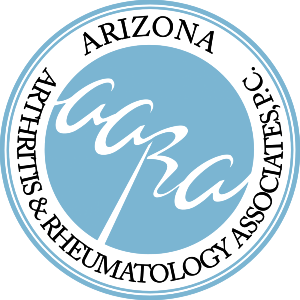Diseases

Psoriatic Arthritis
A patient presented to my office as a new patient, sent because of elbow pain. After careful history taking and an examination of the elbow, it was determined that she had what is better known as “Tennis elbow”, or lateral epicondylitis. Further examination, revealed what we call dactylitis (sausage digit, because it looks like a sausage), pitting of a couple of finger nails and some psoriasis in the Umbilicus (belly button). The diagnosis then went from a localized/isolated tennis elbow to a diagnosis of Psoriatic arthritis.
Psoriatic arthritis comes in many forms and varieties. It can look just like rheumatoid arthritis (RA), involve the spine in a way similar to ankylosing spondylitis (inflammation of the spine), and can be associated with non-musculoskeletal issues such as sores in the mouth and inflammation in the eye. Of course, it is also possible to have Rheumatoid Arthritis in combination with, but unrelated to psoriasis. It is an excellent example of how the pattern of joint involvement can be a clue to the correct diagnosis, and of how the precise diagnosis can be elusive, but is usually more straight forward in the hands of an experienced physician who knows what questions to ask and takes the time to do a thorough exam. Psoriatic skin/nail changes, may predate the joint symptoms, or even follow the joint symptoms by years.
X-rays and labs can assist in the diagnosis, but can be as confusing to the “uninitiated/inexperienced” observer as they can be helpful. Psoriatic arthritis is, as are most illnesses, diagnosed primarily with a good history, good physical exam, and experience helps. The lab and x-rays are only ancillary. Just because a patient has a positive Rheumatoid factor, does not mean that they have RA and not psoriatic arthritis.
Patients have chronic illness, characterized by periods of relative improvement and then periods of flare-ups i.e., worsening. Our aim is to control the numbers of flares, the severity of the baseline level of inflammation, discomfort and disability, and to lessen the severity and the duration of flares. Ultimately, we aim to place the problem into prolonged remission
with drugs such as Methotrexate, and other DMARD (Disease Modifying Anti-rheumatic Drugs) and/or the Biologic modifiers, such as Remicade, Humira, Enbrel, just to mention a few. Because of potential side-effects, we tend to use less often, the class of drugs known as Non-steroidal anti-inflammatory drugs (NSAIDs). Since I had started in practice, the treatment has improved by leaps and bounds.
From time to time, we, at AARA PC might have a research protocol or two aimed at psoriatic arthritis, and it wouldn’t hurt to periodically call us and check up on this if one has been diagnosed as having Psoriatic Arthritis. We also have ongoing research studies for RA, and OA and other varieties of Rheumatic disease.
Business Hours
- Mon - Thu
- -
- Fri - Sun
- Closed
Emergency: 24/7
Contact Us
Contact Us
We will get back to you as soon as possible.
Please try again later.
Having a Medical Emergency?
Please call 911.
New Patient Inquiries:
Click Here
Existing Patients:
Click Here
Scheduling:
(480) 443-8400
Fax: (480) 443-8697
© 2020 Arizona Arthritis & Rheumatology Associates, P.C. | All Rights Reserved


